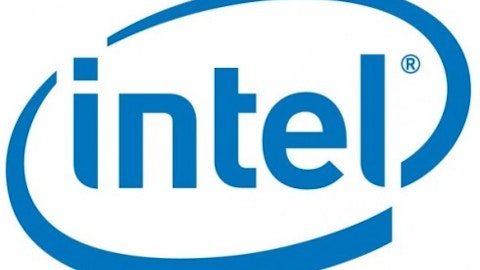Today, there are roughly 105,000 shopping centers of all sizes spread across the U.S., offering the American consumer more than 7 billion square feet of retail shopping space. The Northland Center, now enclosed and modernized, continues to operate to this day despite the Detroit area’s ongoing population exodus. There’s still a Target there, but ownership has passed from the modern parent of J. L. Hudson (which sold its Hudson locations to rival Macy’s, Inc. (NYSE:M) in 2006) to Jones Lang LaSalle Inc (NYSE:JLL), one of the world’s largest real-estate management companies with roughly 2.1 billion square feet under management.
“It’s All About the Pentiums”
Two-core computing products, more than any other, defined the PC era during the latter years of the dot-com bubble. One wasMicrosoft Corporation (NASDAQ:MSFT)‘s Windows 95, which indisputably established Bill Gates as hegemon of the software world. The other was Intel Corporation (NASDAQ:INTC)‘s Pentium microprocessors, which were first shipped on Mar. 22, 1993, two years before Windows 95 hit the market. The Pentium, named after the Greek word pente for “five,” was Intel’s fifth-generation chip and the first to be uniquely branded following a series of numeric “x86” names stretching all the way back to the 8086 in the late 1970s. It is still used to this day to identify some of Intel’s lower-end processors, although these chips are no longer based on the original Pentium microarchitecture.
The original Pentiums ran at clock speeds of 60 or 66 megahertz and used roughly 3.1 million transistors. Intel’s latest and greatest Pentiums of 2013, under the Ivy Bridge brand, run at more than 3 gigahertz (a near 50-fold improvement in clock speed) using two cores. Intel no longer lists the number of transistors on its multicore chips, but considering the fact that the transistor size has shrunk from 800 nanometers in 1993 to just 22 nanometers in 2013, there are undoubtedly dozens of times as many transistors in today’s Pentiums as there were in the original. Considering Intel’s long dominance of the PC processor market, the Pentium brand is undoubtedly one of the best-selling brands in business history. Even in 2010, dual-core Pentiums made up more than 40% of Intel’s desktop processor sales. The Pentium is also one of the few technology products to ever get its own song: “It’s All About the Pentiums” by Weird Al Yankovic.
The article The Most Important Architectural Development of the Last 100 Years originally appeared on Fool.com.
Fool contributor Alex Planes owns shares of Intel. Add him on Google+ or follow him on Twitter @TMFBiggles for more insight into markets, history, and technology.The Motley Fool recommends Home Depot, Intel, and Jones Lang LaSalle. The Motley Fool owns shares of Intel, Jones Lang LaSalle, and Microsoft.
Copyright © 1995 – 2013 The Motley Fool, LLC. All rights reserved. The Motley Fool has a disclosure policy.
